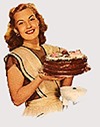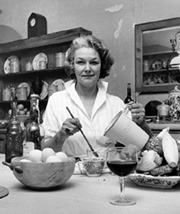A pie recipe from The Second World War found on historyextra.com

No one knows where the name for Homity Pie originates from but the dish was popular with land girls during the Second World War. As well as unrationed items, the recipe also includes rationed foods like cheese, eggs and butter – the original recipe would have used these frugally. Nowadays we don’t have to be so sparing with the cheese and butter, which only make it even tastier.
In every issue of BBC History Magazine, picture editor Sam Nott brings you a recipe from the past. In this article, Sam recreates homity pie – a hearty, vegetarian dish popular during the Second World War.



In Contex
The Land Girls
The Women’s Land Army (WLA) was a British civilian organisation created during the First and Second World Wars so women could work in agriculture, replacing men called up to the military. Women who worked for the WLA were commonly known as Land Girls. The name Women’s Land Army was also used in the United States for an organisation formally called the Woman’s Land Army of America.

In effect the Land Army operated to place women with farms that needed workers, the farmers being their employers.
Second World War
As the prospect of war became increasingly likely, the government wanted to increase the amount of food grown within Britain. In order to grow more food, more help was needed on the farms and so the government started the Women’s Land Army in June 1939.



The majority of the Land Girls already lived in the countryside but more than a third came from London and the industrial cities of the north of England.

In the Second World War, though under the Ministry of Agriculture and Fisheries, it was given an honorary head – Lady Gertrude Denman. At first it asked for volunteers. This was supplemented by conscription, so that by 1944 it had over 80,000 members. The WLA lasted until its official disbandment on 21 October 1949.
Land girls were also formed to supply New Zealand’s agriculture during the war. City girls from the age of 17 and up were sent to assist on sheep, cattle, dairy, orchard and poultry properties.
In popular culture
The Women’s Land Army was the subject of:






























![1946_Canada Dry Water_post_thumb[2] 1946_Canada Dry Water_post_thumb[2]](https://recipereminiscing.files.wordpress.com/2016/08/1946_canada-dry-water_post_thumb2_thumb.jpg?w=474&h=484)



